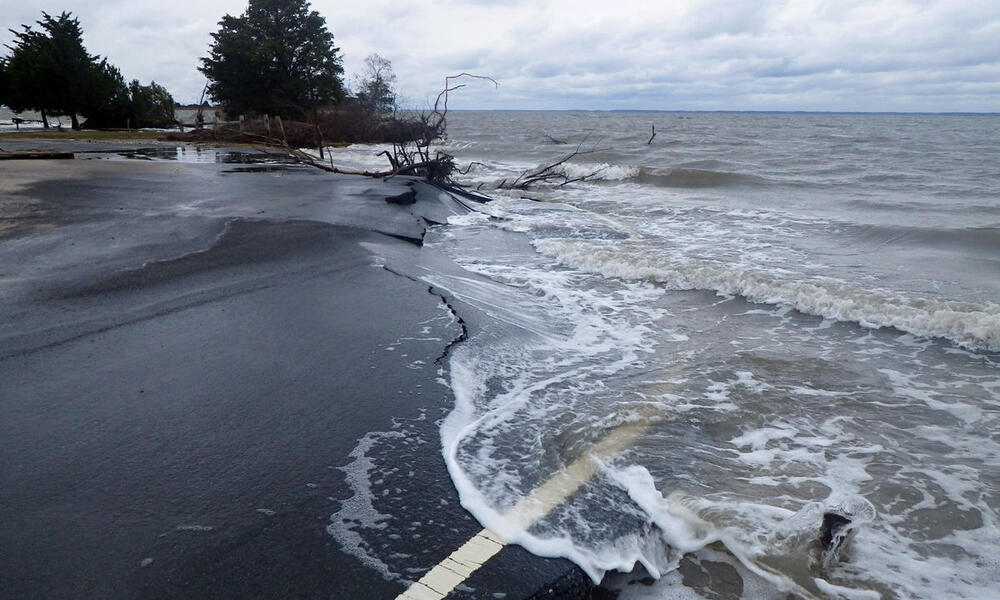Hurricanes
Hurricanes are large and intense storms that form over warm ocean waters. The hurricanes that develop over the Western Pacific Ocean are called “typhoons,” and those born in the South Pacific and Indian Ocean are named “cyclones.”5 Hurricanes are a product of the evaporation of ocean waters of 80 degrees Fahrenheit or higher, creating warm and moist air that rises into the atmosphere. As the air rises, it cools and condenses, forming storm clouds. Winds begin to blow in a circle and gather a cluster of clouds, and as the wind speed increases, the storm reaches the status of hurricane.6
Hurricanes can be accompanied by intense winds, heavy rain, storm surges, coastal erosion, landslides, and tornadoes, causing damage in the coastal areas where they make landfall and beyond. Climate change is increasing ocean and atmospheric temperatures and causing higher sea levels, which in turn can increase the frequency, duration, and intensity of hurricanes, along with their peak winds, storm surge, and rainfall rates.7 Nature can help reduce the damage caused by those impacts. For example, conserving and managing wetlands and marshes can help absorb flood waters, while mangroves, sand dunes, and coral reefs can reduce wave impact.8
It is also important to note that nature itself is impacted during storms and cyclones. This is particularly true for coastal ecosystems, which can suffer from severe damage due to beach erosion, dune destruction, and saltwater intrusion. These changes sometimes lead to a loss of habitat for endangered species.9
Following a hurricane, it’s important to build back safer and greener with improved land use plans along with climate-informed environmental restoration and infrastructure. For example, in a dry area, it would be helpful to plant native desert species that are adapted to local conditions, rather than non-native species that require a lot of water.
Tornadoes
Primarily occurring in the US, tornadoes are rotating columns of air that extend from certain thunderstorms to the ground. The climate crisis is increasing the frequency and strength of severe thunderstorms, which in turn produces atmospheric conditions that can develop even more intense tornadoes.
To reduce the risk of destructive impacts, cities and towns can implement stronger building codes.10 Roof straps and wind-resistant construction materials, for example, can help strengthen resilience. And when responding to a tornado, efforts should be implemented equitably, such as by ensuring that shelters are accessible to people with disabilities.
